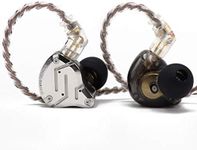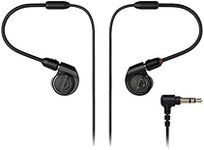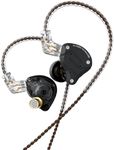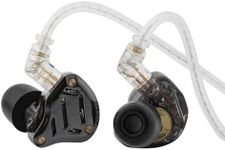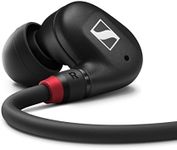Buying Guide for the Best In Ear Monitors For Musicians
Choosing the right in-ear monitors (IEMs) is crucial for musicians who need clear, reliable sound on stage or in the studio. The right pair will help you hear yourself and the rest of the band accurately, protect your hearing, and allow you to perform at your best. When shopping for IEMs, it's important to understand the key features and how they relate to your specific needs as a musician.Driver Type and CountThe driver is the part of the IEM that produces sound. There are different types, such as dynamic, balanced armature, or hybrid (a mix of both). More drivers can mean better separation of sounds (like bass, mids, and highs), but it's not always about having the most. If you play an instrument with a wide frequency range or sing, more drivers can help you hear details more clearly. For simpler monitoring needs, a single or dual driver may be enough. Think about the complexity of your music and what you need to hear most clearly when choosing.
Fit and ComfortFit refers to how well the IEMs sit in your ears, which affects both comfort and sound isolation. Some IEMs come with universal tips in different sizes, while others can be custom-molded to your ears. A good fit is important for long performances and for blocking out stage noise. If you perform for long periods or move a lot on stage, prioritize comfort and secure fit. Custom-molded IEMs offer the best fit but are more expensive, while universal ones are more affordable and can still be comfortable if you find the right tip size.
Sound IsolationSound isolation is how well the IEMs block out external noise. This is important for musicians because it helps you focus on your mix without being distracted by loud stage sounds. IEMs with better isolation let you keep the volume lower, protecting your hearing. If you play in loud environments, look for IEMs with high isolation, often achieved with deeper or custom fits. If you need to hear some ambient sound (like audience or bandmates), you might prefer less isolation or models with ambient ports.
Frequency ResponseFrequency response describes the range of sounds the IEMs can reproduce, from low bass to high treble. A wider frequency response can mean more detailed sound, but what's more important is how balanced the sound is. If you play bass or drums, you might want stronger low-end response. Singers and guitarists may prefer clear mids and highs. Think about your instrument and what frequencies are most important for you to hear clearly.
Cable Quality and DetachabilityThe cable connects your IEMs to your audio source. A sturdy, tangle-free cable is important for reliability on stage. Some IEMs have detachable cables, which means you can replace them if they break without buying new monitors. If you move around a lot or want your IEMs to last, look for strong, detachable cables. If you’re mostly stationary, a fixed cable may be fine.
Impedance and SensitivityImpedance and sensitivity affect how loud and clear your IEMs will sound with different equipment. Low impedance and high sensitivity IEMs are easier to drive and work well with most wireless packs and mixers. If you use professional audio gear, you may have more flexibility, but for most musicians, choosing IEMs that are easy to drive ensures you get enough volume and clarity without distortion.




